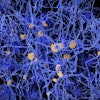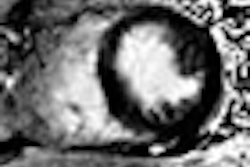MRI is providing an increasing number of clinical benefits when used in evaluating spinal conditions, according to an article in the January 2009 issue of the Journal of the American Academy of Orthopaedic Surgeons. Over the next several years, additional technical developments will allow MRI to provide even more useful orthopedic benefits, the authors noted.
"MRI can be used to identify or display almost every type of spinal tissue or pathology," said co-author Dr. Victor Haughton of the department of radiology at the University of Wisconsin Hospitals and Clinics in Madison. "The imaging sequence can be modified for many different clinical needs."
MRI is considered safe, fast, and versatile and is now being used in several spinal applications, such as intervertebral disk and facet joint degeneration, spinal canal stenosis, vascular disorders, and trauma, according to the authors.
CT has also improved in resolution and scanning speed, and it is often the only imaging method available for patients with pacemakers and nerve stimulators or claustrophobic patients. However, CT exposes patients to radiation.
Although an important technology, MRI should never take the place of a thorough medical history and physical examination, the authors noted. Also, MRI often shows structural findings or abnormalities that are not clinically relevant and not necessarily related to a patient's symptoms. MRI findings must always correlate with the patient's clinical picture, they stated.
"The possibilities of magnetic resonance have not yet been realized. It is a rapidly evolving field. When we need tools to identify a possible herniated disk, the simplest type of MR imaging or CT imaging can be used successfully. However, if you want to find out which disk is causing pain, which nerve is firing, which metabolites are present in abnormal amounts, or how well the spinal elements are functioning, MR will provide the answers," Haughton said.
Related Reading
What do orthopedists want? In-office MRI, digital x-ray, report finds, March 28, 2007
Copyright © 2009 AuntMinnie.com


.fFmgij6Hin.png?auto=compress%2Cformat&fit=crop&h=100&q=70&w=100)





.fFmgij6Hin.png?auto=compress%2Cformat&fit=crop&h=167&q=70&w=250)











